NT education system and the scandal of the nation’s forgotten schoolkids
The NT school system is failing students by leaving at least one in five effectively unfunded, offering an education so bad that most fail minimum literacy and numeracy standards.

The Northern Territory school system is failing students by leaving at least one in five effectively unfunded, offering an education so under-resourced that most fail to meet minimum standards of literacy and numeracy, and in some cases not even providing full-time teachers.
An estimated annual funding shortfall of $214.8m is contributing to such low standards that some say it amounts to a human rights violation.
In the NT, 58 per cent of all students and 85 per cent of Indigenous students fall below minimum literacy and numeracy standards, and attendance rates are as low as 20 per cent in some remote schools. Experts claim the Territory has the country’s worst educational outcomes because of an “inequitable” funding system that discriminates against remote Indigenous communities by giving less money to schools with low attendance rates.
NT Anti-discrimination Commissioner Jeswynn Yogaratnam said the inequitable outcome as a result of the attendance-based funding model goes against fundamental rights safeguarded in the Convention on the Rights of Children.
“The current model fails to achieve equal opportunity and in fact promotes inequitable outcomes,” he said.
NT: Schools in crisis
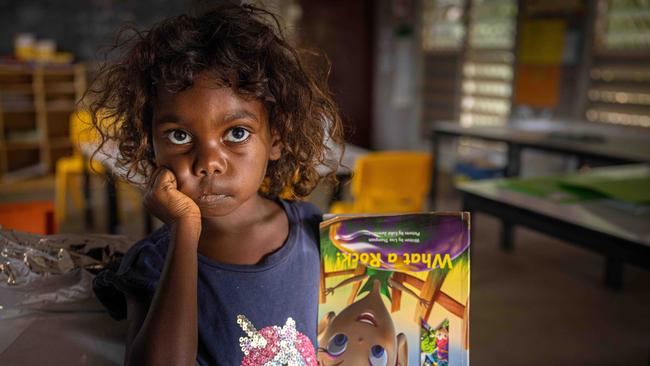
The shocking state of NT education
If the students at Gamardi are lucky, a teacher will turn up two days a week. For whole months, nobody comes. And then there is the sorry excuse for a classroom. ‘If this was happening in an urban setting, they’d sack the government on the spot.’

Kids fall off the money-go-round
While lush lawns and gardens welcome students inside Alyangula, less than 20km away, Angurugu’s imposing gates present a bleak, very different picture.
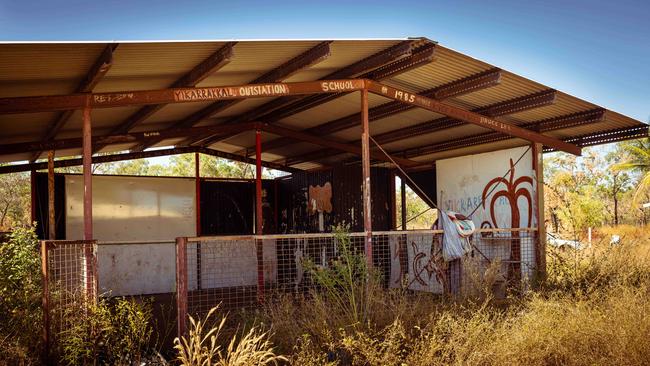
Schools short-changed by millions
An analysis of Northern Territory schools most affected by underfunding shows all but three had an Indigenous student population of more than 95pc and were remote.

Security, prospects take toll at schools
Attendance rates at remote Northern Territory schools are as low as 18.7 per cent and have been falling for a decade.

Scandal of the nation’s forgotten schoolkids
The NT school system is failing students by leaving at least one in five effectively unfunded, offering an education so bad that most fail minimum literacy and numeracy standards.
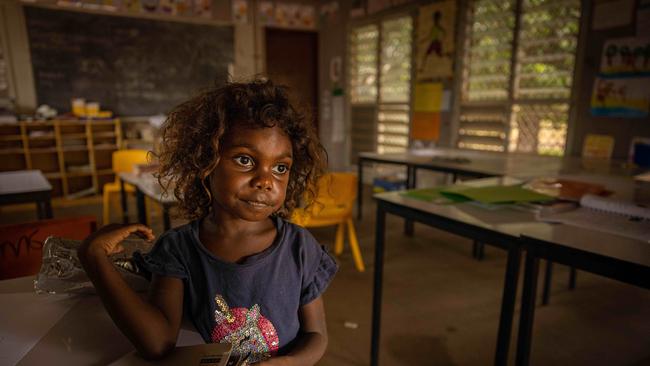
NT Education Minister Eva Lawler said in a statement that it was her “absolute focus to support every child right across the Territory so they become valuable contributors and future leaders of our community”.
Over the next week, The Australian will report on the funding and systems failures that stem from one in five NT students effectively having no money spent on their education.
Among the worst-affected are about 400 children learning in remote homelands. Many have access only to part-time education, with a registered teacher visiting just once or twice a week.
Many children in homelands are learning in buildings without power or water, and local assistant teachers are left to run classrooms, sometimes for months.
The Australian visited students at Gamardi, a 75-minute drive from Maningrida in central Arnhem Land, and saw students learning on a whiteboard balanced on a wheelie bin because the classroom, which has no power, is too hot and dark to use.
This year, Gamardi had its first visit from a registered teacher on May 18, more than three months after the beginning of the school year.
The Northern Territory government has known about the dire conditions in these facilities since it conducted a review in 2019, which was never released.
A decade-old policy has also meant 78 remote communities have no access to local secondary education, resulting in high dropout rates and some children going on to join criminal gangs.
Many experts suggest poor health outcomes and high rates of crime, domestic violence and general disadvantage are symptoms of an education crisis that has been boiling over for more than a decade under successive governments.
“The Northern Territory should be setting the standard for addressing disadvantage,” Australian Education Union NT president Michelle Ayres said. “But instead, we are setting the standard for widening the gap. ”
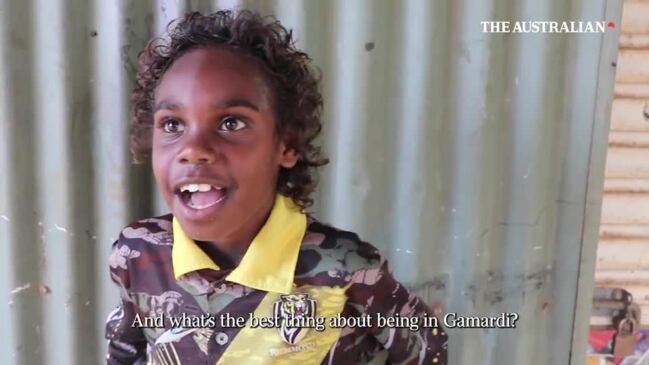
The NT is the only Australian jurisdiction to use a widely criticised attendance-based funding model, in which resources are allocated on the basis of attendance, rather than enrolment.
In some schools, fewer than half the students are funded. For example, in 2022, Gunbalanya School received no funding for 121 of its 229 students and Yuendumu School had 89 unfunded students out of 165 enrolments.
Ms Ayres said the NT government had stripped funding from remote, Indigenous and disadvantaged urban children in ways that were “incredibly unjust” and “a human rights violation”.
“How can we take the most disadvantaged people and make sure that they’re more disadvantaged?” she said.
After a 2022 Deloitte report revealed the extent of the damage caused by attendance-based enrolment, the NT government announced that it would move away from the funding model over the next five years.
The Weekend Australian asked Ms Lawler a range of questions related to the inequities of attendance-based funding, when the new funding model would be implemented, and what would be done during the roll-back period to ensure NT students, particularly Indigenous students in remote areas, would not be affected by the lack of funding.
Ms Lawler declined an interview and sent a written statement that did not address the questions.
She did not respond to claims that unfunded students are a breach of the NT government’s human rights obligations, or that attendance-based enrolment was “systemic racism”.
“Education is the backbone of our society, and here in the Northern Territory we understand the immense challenges remote education poses,” Ms Lawler said.
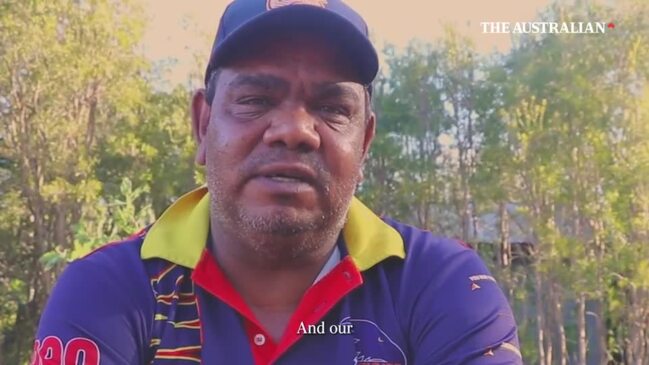
“Furthermore, we are ensuring through an array of programs, strategies and measures that all our children get the best possible access to a high-quality education, so they get the best start in life.
“As a Territory educator of over 40 years, I especially understand the value and importance of engaging and improving outcomes for Aboriginal and our most remote students, which is a key focus for us moving forward. As such, intensive work is currently under way to build stronger foundations for long-term improvement for Aboriginal students in the NT.”
However, the AEUNT and education experts say schools cannot afford to wait for a new system to roll out. “It is breaking our schools,” Ms Ayres said. “Schools are at crisis point.”
The series NT Schools in Crisis, a year-long investigation involving more than 100 interviews, can reveal the extent of the government failure, which one teacher said had left schools in a state of “dysfunction”.
“Everyone is desperately trying to keep the ship afloat,” said the teacher, who cannot be named because NT education contracts prevent staff from talking to media.
“It’s a structural problem, a resourcing problem. Schools are set up to fail because they can’t meet their students’ needs.”
Homeland Learning Centres – small “classrooms” in very remote Indigenous communities – bear the brunt of funding inequity.
Professor John Guenther, a research leader for education and training with the Batchelor Institute of Indigenous Tertiary Education, said many of the 400 students in these facilities received only part-time education.
“The (NT government) gets away with it because they’re not counted as schools,” Professor Guenther said.
“It’s not only a social justice issue, it’s a human rights issue, which seems to be ignored. And what’s more, it goes against the spirit, if not the law, of the Education Act.”
He was also critical of the attendance-based funding model which he said disadvantaged Aboriginal students. “It’s systemic racism,” he said. “That’s what it is, whether you like to call it that or not.”
The Weekend Australian has examined the extent to which remote NT schools are underfunded, with some schools directly receiving only 30 per cent of their funding.
The Deloitte report found that NT students were the most underfunded in the country, compared with a national funding standard that accounts for student need, including socio-economic status, remoteness, disability and Indigenous status. The report said that in 2020, NT students received only 78 per cent of their estimated $29,831 per student required to provide minimum standards of education.

The $6374-per-student shortfall would amount to an estimated $214.8m funding gap across 33,700 public school students.
Federal Education Minister Jason Clare acknowledged that not every school was fairly funded, particularly in the NT, which was not on track to achieve minimum funding standards before 2050.
“They receive approximately 80 per cent of their full and fair funding level,” he said.
“On average, public schools in the NT are the most underfunded schools in the country.”
Mr Clare said funding inequities were a focus of a National School Reform Agreement.
In the NT context, funding that is allocated is distributed according to an attendance-based funding model, which means remote and Indigenous students are worse off.
In 2021, 34 of 151 government schools in the NT received less than 50 per cent of their allocated income in their school budgets. All but three of these schools had an Aboriginal or Torres Strait Island student population of more than 95 per cent and many of the most-affected schools were remote.
Member for Mulka (East Arnhem) Yingiya Mark Guyula has been calling for transparency around education spending since he was elected in 2016. The Yolngu man said despite successive increases in education budgets, remote school budgets had been cut and staff were struggling to provide essential programs. “We need to have equality,” he said.
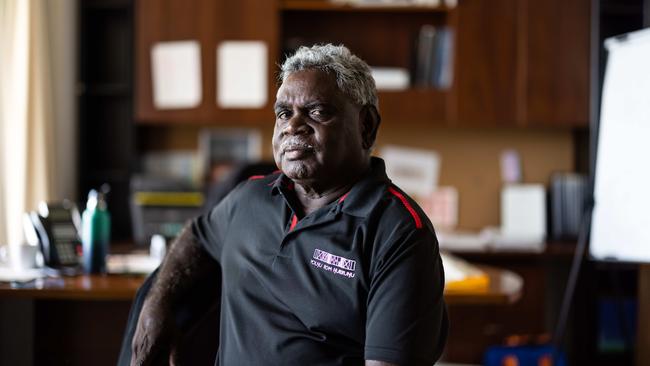
As a result of reduced budgets, one Darwin school had to choose between cutting its low or high literacy program, and some remote schools have been forced to axe music and PE programs, reduce teaching staff or replace experienced educators with graduates.
CQU manager and academic lead for First Nations Studies Gary Fry, who is a Dagoman man and a former NT principal and teacher, said he’d seen “an acceleration of marginalisation” in NT education.
“The Department of Education has really functioned as a service disabler, rather than a service enabler in schools,” Dr Fry said. He said remote and Indigenous communities had been a “cash cow” for the NT government, which collected income on the basis of disadvantage, then used it to support a “bloated bureaucracy”.
In addition to the funding shortfall, the NT’s bureaucratic spending means less than half of its $1.2bn budget is going directly into school spending.
According to 2022 Productivity Commission data compiled by the AEUNT, the NT has 22 non-school staff per 1000 students, compared with nine in the ACT and eight in Tasmania, both comparably small jurisdictions.
An AEUNT report also said NT education spending on non-school staff rose 81 per cent between the 2015 and 2020 financial years, to $123.1m.
“This is public money, and these people have been benefiting from it,” Dr Fry said. “People are just basically using Aboriginal people for political reasons, putting their hand out for the money, and then just absolutely not accounting properly for the way that money has been expended.”
The poor standard of schooling has also been linked to crime rates in the NT. “Our rates of youth crime are very uncomfortable, our rates of domestic violence are extremely uncomfortable and we have appalling health outcomes,” said former NT Labor politician Scott McConnell, who grew up in central Australia attending remote schools. “All these fundamental things are entwined with school attendance.”

Teachers have told The Weekend Australian attendance is often linked to health, housing and general disadvantage. One principal said he had one student who had been living in a tent in a river bed for two years.
“The NT government is saving money by not funding kids in the bush properly, but it’s really just sentencing the whole of the NT to more social dysfunction,” one education worker said.
Professor Guenther said it wasn’t hard to rate the health of remote education in the Territory.
“On a scale of A to E, I’d give it an E,” he said. “The main concern I have is that you’ve got so many young people now who are disengaged from education. Unless that’s turned around, they’re the next generation, they’re going to suffer even more than the current generation is suffering.”
Mark Motlop, former chair of the NT Indigenous Education Council, said it was time for change: “There’s the old saying, if it’s not broken, don’t fix it. But it’s broken now, so you gotta to fix it.”
One former teacher said poor educational outcomes had been normalised. “The house is on fire. Why aren’t we talking like the house is on fire?” they said.
Kylie Stevenson, Caroline Graham and Tilda Colling are independent journalists working in the Northern Territory and Queensland. This project was supported by the Meta Public Interest Journalism Fund

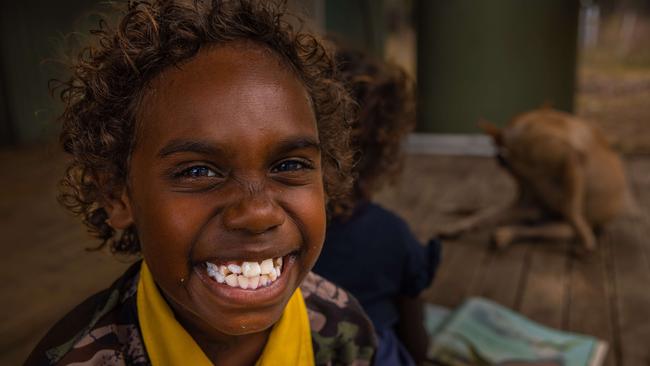
To join the conversation, please log in. Don't have an account? Register
Join the conversation, you are commenting as Logout